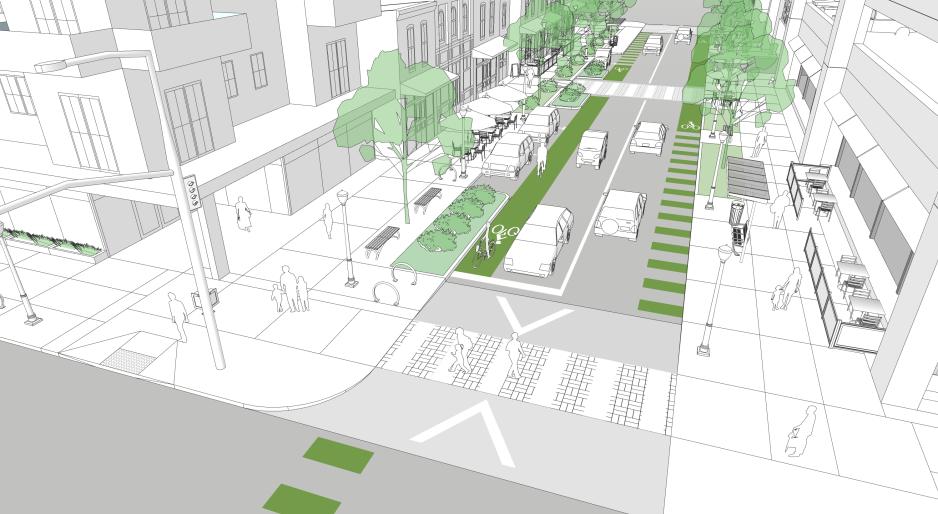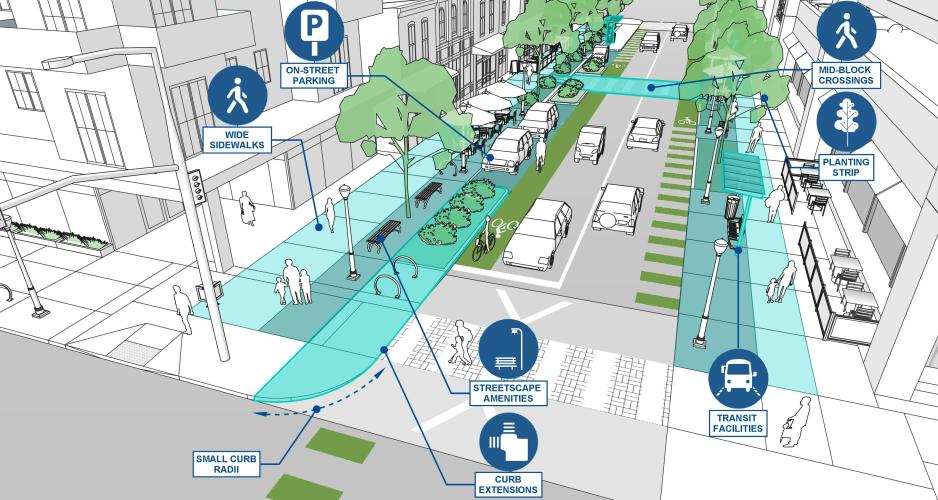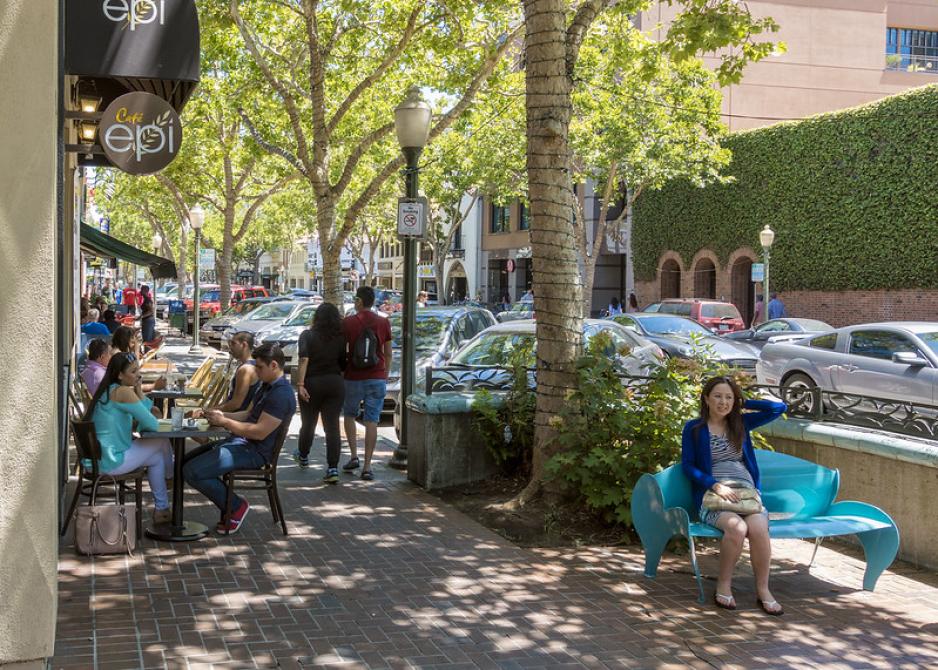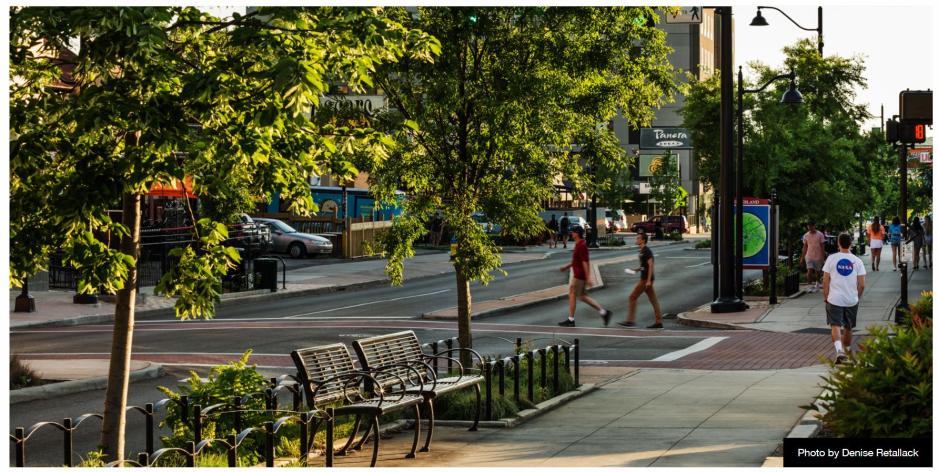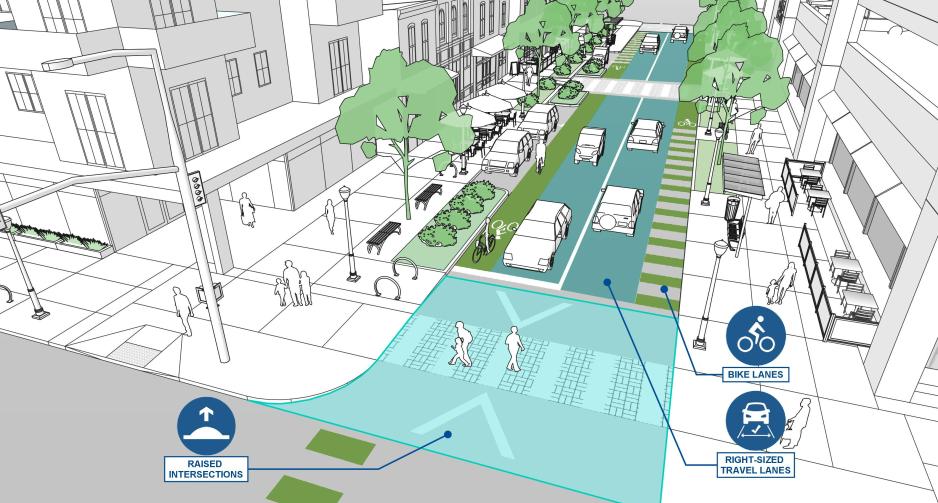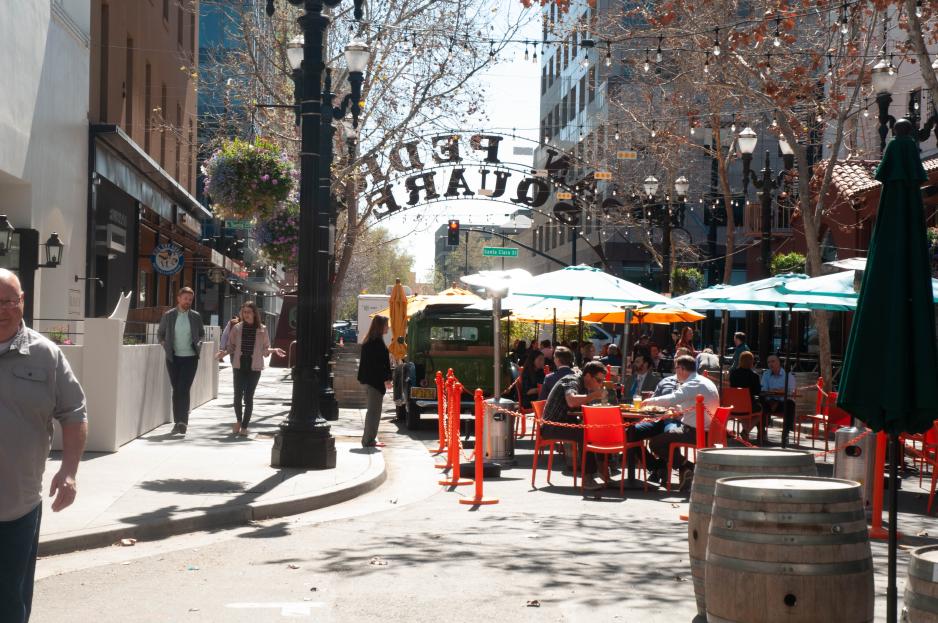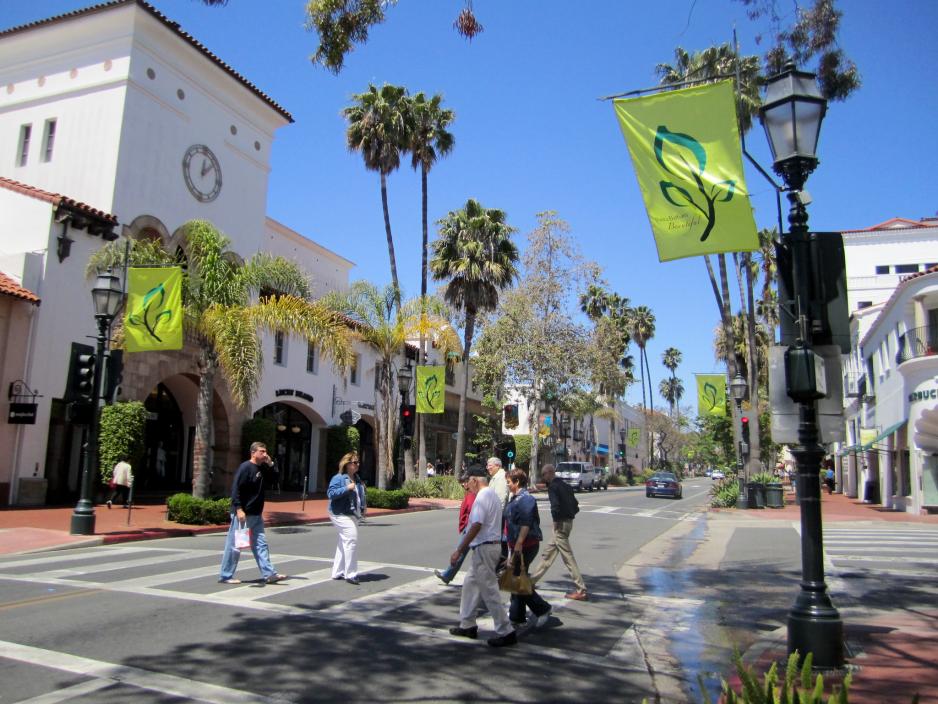Main streets serve the highest-intensity retail and mixed land uses in cores and corridors, including downtown areas, regional, and neighborhood centers. These places have high amounts of activity and are prominent gathering places of the community. Buildings are typically oriented to the street with parking lots located behind. Such areas have very high levels of pedestrian activity and because they are major destinations, also experience high volumes of vehicles and transit.
Like mixed-use streets, main streets emphasize walking, bicycling, and transit within an attractive landscaped and high-amenity public space, while accommodating high traffic volumes at low speeds. Main streets can be designed with multiple travel lanes, but typically feature two, because the focus here is on creating a lively pedestrian space.
Higher priority design elements and traffic management features on main streets support a thriving pedestrian environment.
- Provide wide sidewalks with public gathering spaces.
- Provide curb extensions mid-block and at intersections. Curb extensions may be furnished with vegetation or bike parking. Consider site lines and adjacent land use to determine suitable furnishings.
- Provide a planting strip in the furnishing zone between the sidewalk and curb. Include shade trees at a minimum and low planting where feasible.
- Provide on-street parking, especially in retail areas, with angled (preferably head-in) option
- Provide streetscape amenities such as lighting, benches, and trash receptacles, and bike racks.
- Provide urban design features such as public art and gateway features.
- Provide high amenity transit facilities.
- Design streets and intersections supportive of multimodal transportation.
- Consider mid-block crossings (combined with other traffic calming features).
- Design small curb radii at intersections.
Lower-priority design elements and traffic management features on main streets support efficient and vehicular movement and reduce conflict while still supporting a thriving pedestrian environment.
- Right size the number and width of travel lanes for traffic speeds, volumes and vehicle sizes. Provide narrower travel lanes where feasible.
- Provide medians for pedestrian comfort and aesthetics, including planting.
- Manage access.
- Accommodate large vehicles.
- Provide bikeways such as bike lanes.
- Provide high-visibility crosswalks.
- Consider alternative paving materials at crossings to increase visibility.
- Consider alternative paving materials in the sidewalk zones for wayfinding and aesthetics.
- Consider raised intersections.
